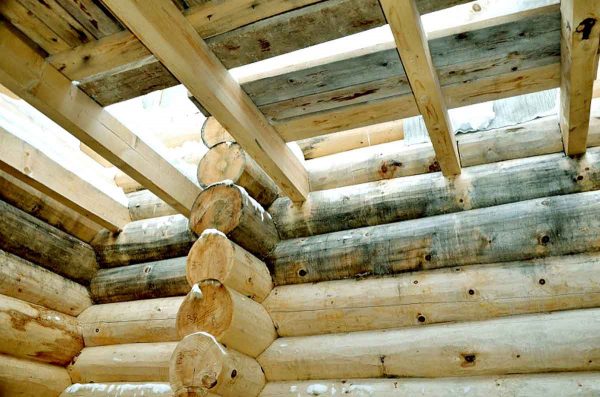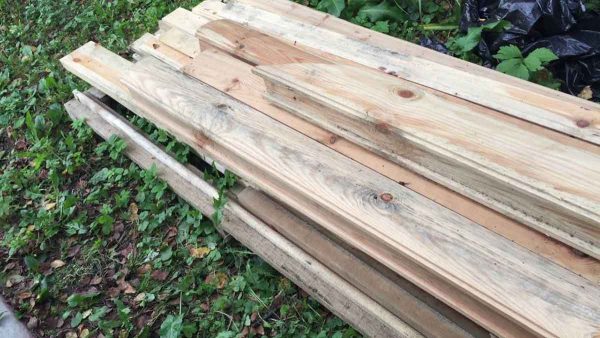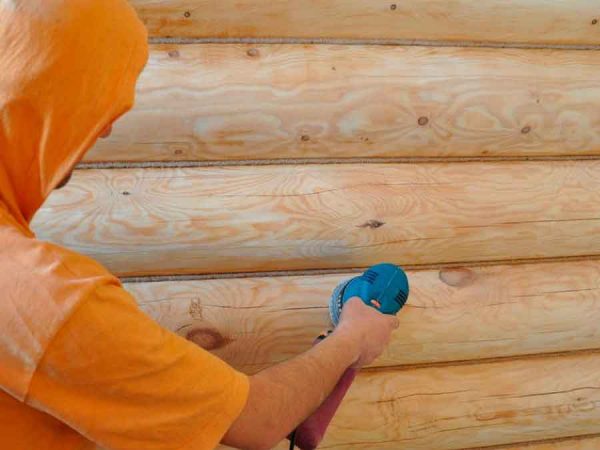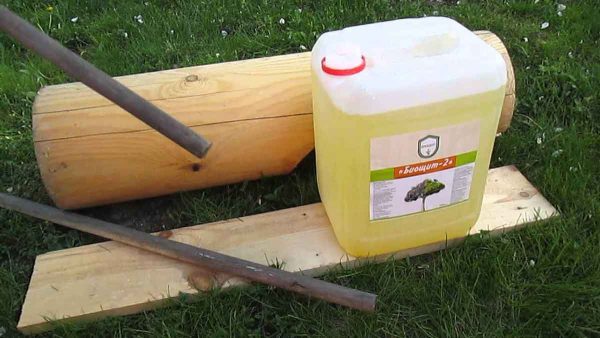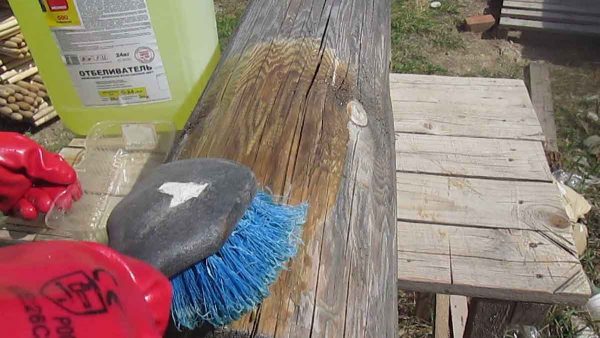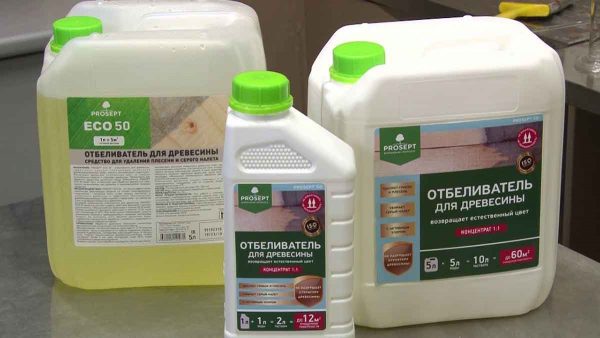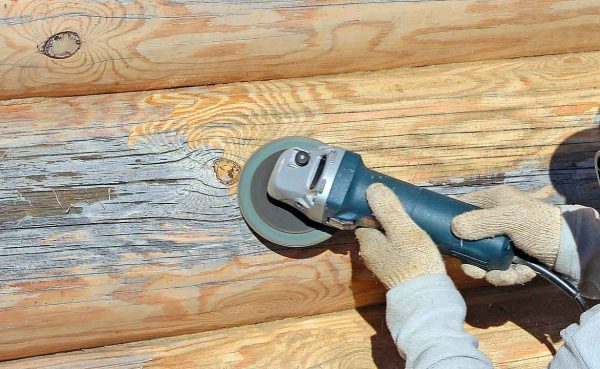Many people like the natural color of the tree - these shades are really nice for the eyes. But often for people who bought a wooden house, another structure (bathhouse, gazebo) or wood products, the real shock is not normal, but the bluish, gray or blackish color of the wood.
- Causes and consequences of blue wood
- The primary signs of blue on the tree
- What is fraught with the use of wood with blue
- How to get rid of blue
- How to prevent the appearance of blue
- Home remedies
- Factory Tools
- Bioshield 2
- Neomid 500
- Prosept 50
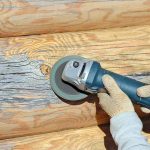
Causes and consequences of blue wood
Most often, fungal lesions occur due to violations of storage and operating conditions. The main factors for the appearance of blue are:
- imperfection of ventilation in warehouses or in residential premises - wood is “healthier" where air flows are better circulated;
- excess moisture - the tree should be stored without moisture, as it easily absorbs it if the moisture content of the material reaches 18%, the spores of the fungus are very “happy”, this is an excellent environment for their development;
- lack of sun - if a tree is constantly in a shaded area, it inevitably begins to damp;
- the same will happen with prolonged contact of building materials with soil or grass;
- poor-quality processing of logs, boards, timber - if the surface is not processed for full smoothness and there are knots, cracks, roughness, bark residues on it, it is more vulnerable to fungal infection.
It happens that a tree is struck at the root - if weevils, bark beetles and other wood destroyers have had time to dine. They violate the integrity of the surface, and blue appears in the affected areas.
to contents ↑The primary signs of blue on the tree
Signs of wood damage by a blue fungus can be accurately determined with the naked eye: this is a discoloration of the fibers on the surface of the tree. It takes on unpleasant shades, the conventional name "blue" does not necessarily mean blue. Color can become gray, ashen and even almost black. The first association to emerge - the tree is moldy. So it is: blue is a mold.
to contents ↑What is fraught with the use of wood with blue
Blue stain does not mean rot, the fungus penetrates only into the upper layers of the tree to a depth of not more than 2 mm. But this is not a harmless phenomenon. Not only the appearance of a building or product is spoiled. Fungal infection is an alarm: in the future, the bluish upper layer will begin to absorb moisture more actively than undamaged areas. So, it will become vulnerable to rot. A humid environment is favorable for the development of other fungi and wood-destroying microorganisms. With time:
- products from such a tree will quickly undergo deformation;
- the design will become fragile and unstable;
- staying in such a building is dangerous for health: it is harmful for a person to “breathe mold”, it is fraught with the appearance of allergic reactions, pulmonary diseases, joint pains, such a neighborhood is especially dangerous for children;
- you can forget about the presentable appearance of a building or product: even just created ones, they will look untidy.
How to get rid of blue
Preventive measures are necessary to protect the tree from damage by a fungus. But if they did not help or if it was not possible to timely carry them out, and the wood has already turned blue - you will have to deal with the removal of this coating and the protection of the surface.Recommended:
- cut off the affected layer - sand or plan dark areas;
- conduct antiseptic treatment;
- create a protective layer - paint or varnish a building or product.
How to prevent the appearance of blue
Preventive measures will not damage the tree and can save you from difficulties:
- Do not settle in the newly built house and do not start immediately using the bathhouse: let the buildings “stand” for a certain time (optimally - up to a year) so that the wood dries out.
- Ventilate the room thoroughly. If the humidity level in it is high - take care of the ventilation system.
- If possible, monitor the storage of building materials for future buildings: they must lie in stacks so that there is air circulation between them, and on special lining bars, pallets, so as not to come into contact with wet soil and grass.
- Treat the tree with an antiseptic - this will prevent the formation of blueness for a long time. It is recommended to carry out antiseptic prior to installation.
The cyanotic and dark spots that have already appeared can be eliminated with the help of tried and tested folk and factory remedies.
to contents ↑Home remedies
If the budget is limited or for some reason there is no access to specialized industrial drugs, for a general battle with the blue, home ones are also suitable:
- bleach-based household bleaches (Whiteness and the like) - this is an extremely budget option;
- oxygen powder bleaches for fabrics - they should be diluted with water according to the instructions and used using a spray gun (advantages - safety and the absence of pungent odors);
- bleach and soda (the solution is prepared in a bucket, 250 grams of soda is required per 2 kg of lime);
- sodium hydroxide, in 2 parts of water - 1 part of sodium;
- perhydrol (gives an alkaline environment, therefore, after completion of the treatment, its neutralization is required, a 4% solution of acetic acid will be required here).
Cons of home whitening products:
- it is important to observe all the proportions and rules of surface treatment;
- long-term protection against damage by the fungus is not guaranteed.
Factory Tools
Manufacturers of specialized factory products, on the contrary, give a guarantee of the effectiveness of their products - they predict a protective effect for 15 or even 30 years.
It is worth spending money to keep the wood healthy! Well proven in the fight against blue industrial bleaches.
Bioshield 2
An antiseptic bleach that destroys the fungi themselves, their spores and the color changes they cause. Suitable for all types of wood. In cases of deep damage, it is used as an impregnation: it should be applied to the fungal areas several times with an interval of 1-2 hours.
to contents ↑Neomid 500
Concentrated bleach with a restorative effect. It actively fights against the fungus, restoring the wood to its natural color and attractive appearance. It does not affect the properties of the material. Suitable for use both in diluted and in original form.
to contents ↑Prosept 50
Fast bleach based on chlorine. Extremely actively penetrates into the deeper layers, without affecting the natural qualities of the material. It does not contain additives hazardous to health - it can be used even for surfaces in contact with food. The effect is noticeable after half an hour.
The blue of wood is not a sentence to a building or an article at all. The main thing is to timely pay attention to the fungal infection and fight it, as well as to observe preventive measures. Be careful: when using home and factory products to combat fungus, observe safety measures. Wear formulations using protective equipment: mask, glasses, gloves.

